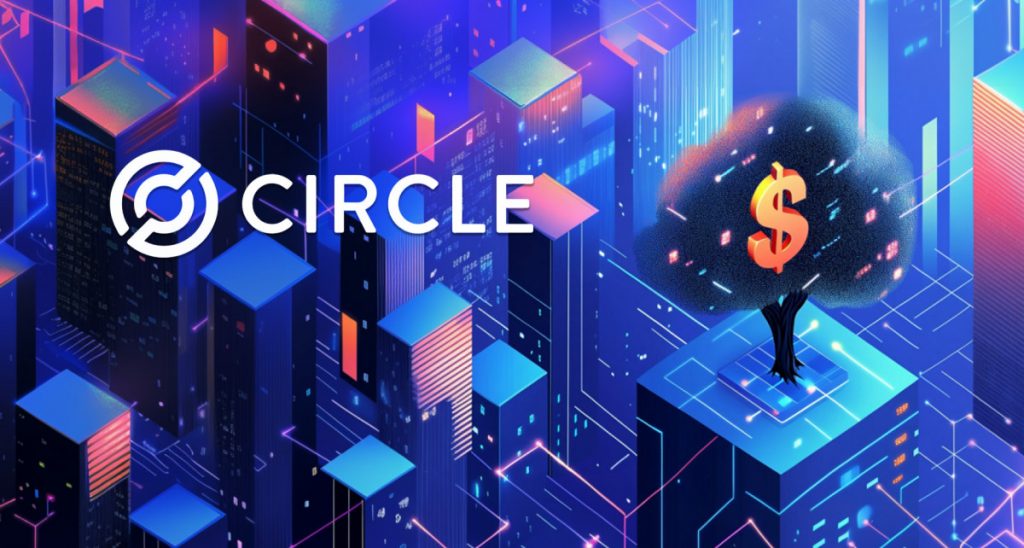Circle Integrates Uniswap’s Permit2 Into Payments Network, Simplifying Stablecoin Authorization And Settlement


In Brief
Circle has integrated Uniswap’s Permit2 into its Payments Network, launching Onchain Transaction V2 to streamline stablecoin authorization and settlement.

Financial technology company Circle announced that its Circle Payments Network (CPN) now supports a new transaction flow using Uniswap’s Permit2, streamlining the authorization and settlement of stablecoin payments.
This update allows developers to execute transactions without needing to manage blockchain processing fees in native tokens, sign raw transactions, or handle nonce management. Transactions are completed using only USDC and a signature, with automatic acceleration applied when needed.
By combining Permit2 with CPN’s new PaymentSettlement Contract, developers can integrate secure, compliant, and fully abstracted on-chain payments more easily.
The Onchain Transaction V2 upgrade enhances efficiency within CPN by simplifying blockchain fee management, allowing fees to be paid in USDC rather than native tokens, and implementing EIP-712 typed data for transaction signing. This removes the need for raw transaction signing and manual nonce handling while enabling CPN to automatically broadcast and accelerate transactions for timely settlement.
The CPN PaymentSettlement Contract is a new smart contract that verifies and executes transactions. It validates payment intents submitted by Originating Financial Institutions (OFIs) on behalf of senders, enforcing time and nonce rules. Payments are settled by pulling funds from the payer via Permit2, then distributing value to the payee and any applicable fees to the beneficiary.
New Integration To Power Onchain Transaction V2 With Simplified Token Authorization
The integration of Permit2 into Circle Payments Network (CPN) introduces a simplified flow for token authorization and transfer. Combined with the PaymentSettlement Contract, Permit2 forms the foundation of Onchain Transaction V2, where Permit2 manages the authorization layer and the PaymentSettlement Contract handles verification, while the Relayer Service facilitates transaction relaying and manages blockchain processing fees.
In this system, the OFI wallet acts as the owner, operating on behalf of the sender. The PaymentSettlement Contract serves as the spender, verifying and executing payments once authorized. Permit2, deployed by Uniswap, functions as the mediator by validating signature-based approvals.
The approval process occurs in two stages. The first, master approval, requires the OFI wallet to grant Permit2 an ERC-20 allowance with a configurable limit per token; this does not authorize the Relayer to move funds. The second, sub-approval, occurs for each payment, where the OFI wallet signs a temporary Permit2 sub-approval specifying the PaymentSettlement Contract as the authorized spender for a defined amount, including an expiry and a nonce. When the Relayer submits the transaction, the PaymentSettlement Contract pulls the funds via Permit2, while the Relayer itself cannot access the funds.
Permit2 And Circle Simplify On-Chain Settlement
Permit2 introduces signature-based ERC-20 approvals, allowing wallets to authorize token spending by signing a message rather than broadcasting an on-chain approval. Once this authorization is complete, the PaymentSettlement Contract validates the payment intent and executes the settlement on-chain via the Relayer Service. This approach eliminates the need for partners to manually manage nonce tracking or fund blockchain processing fees, as the contract handles validation and the Relayer handles transaction broadcasting.
Developers can use Circle’s Wallets API to programmatically approve Permit2, granting it the necessary allowance to process future payments automatically. After Permit2 authorization, a CPN payment quote can be created using the API parameter transactionVersion: “VERSION_2”, with the returned quote including blockchain processing fees denominated in USDC.
In order to execute a CPN V2 transaction, developers call the updated V2 endpoint, receiving an EIP-712 typed data payload for signing. The signature, generated through Circle’s Developer Controlled Wallets endpoint, is then used by CPN to complete the transfer, removing the need for raw transaction management.
By combining Permit2 with the PaymentSettlement Contract, Circle streamlines on-chain settlement for both authorization and execution. Permit2 handles signature-based USDC approvals, the PaymentSettlement Contract verifies and executes payments, and the Relayer abstracts transaction broadcasting and blockchain fee management. These upgrades simplify on-chain payments, reduce manual transaction handling, remove the need to manage native tokens, and enable efficient settlement through a single API call paired with an off-chain signature.
Disclaimer
In line with the Trust Project guidelines, please note that the information provided on this page is not intended to be and should not be interpreted as legal, tax, investment, financial, or any other form of advice. It is important to only invest what you can afford to lose and to seek independent financial advice if you have any doubts. For further information, we suggest referring to the terms and conditions as well as the help and support pages provided by the issuer or advertiser. MetaversePost is committed to accurate, unbiased reporting, but market conditions are subject to change without notice.
About The Author
Alisa, a dedicated journalist at the MPost, specializes in cryptocurrency, zero-knowledge proofs, investments, and the expansive realm of Web3. With a keen eye for emerging trends and technologies, she delivers comprehensive coverage to inform and engage readers in the ever-evolving landscape of digital finance.
More articles

Alisa, a dedicated journalist at the MPost, specializes in cryptocurrency, zero-knowledge proofs, investments, and the expansive realm of Web3. With a keen eye for emerging trends and technologies, she delivers comprehensive coverage to inform and engage readers in the ever-evolving landscape of digital finance.


















































